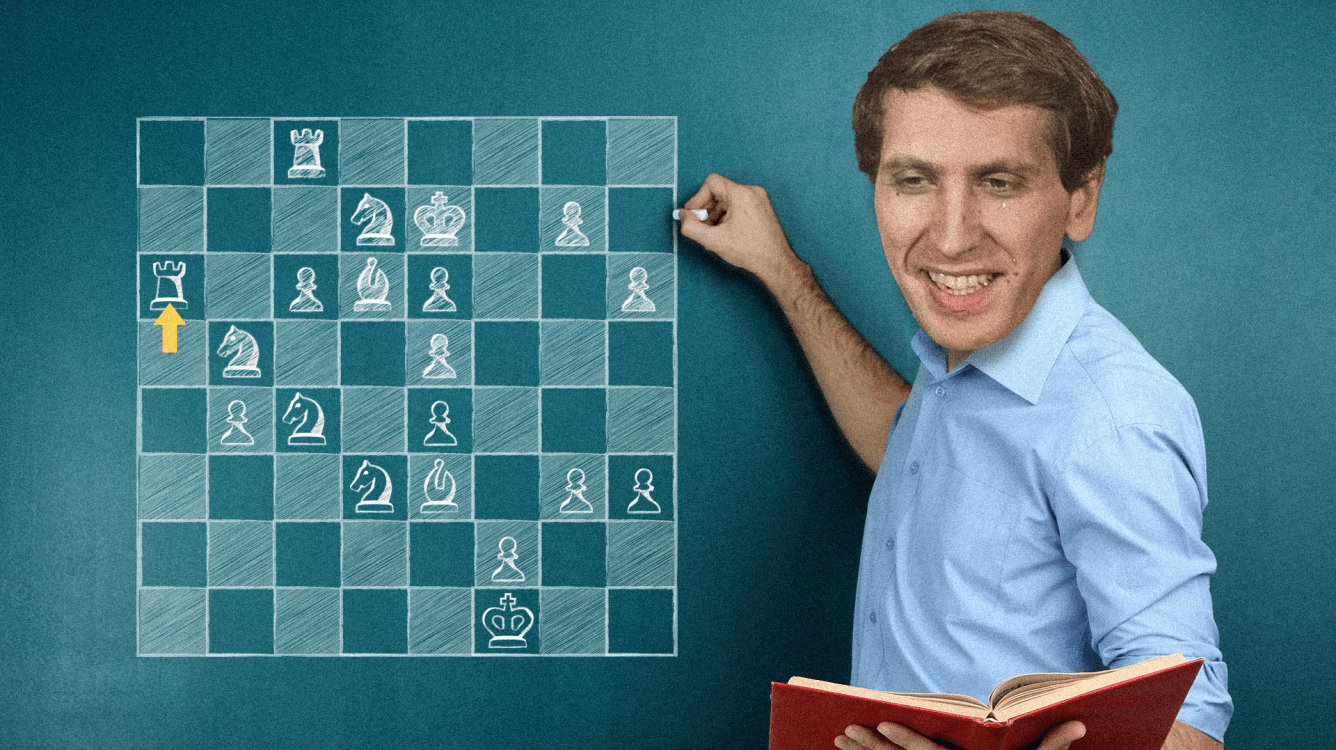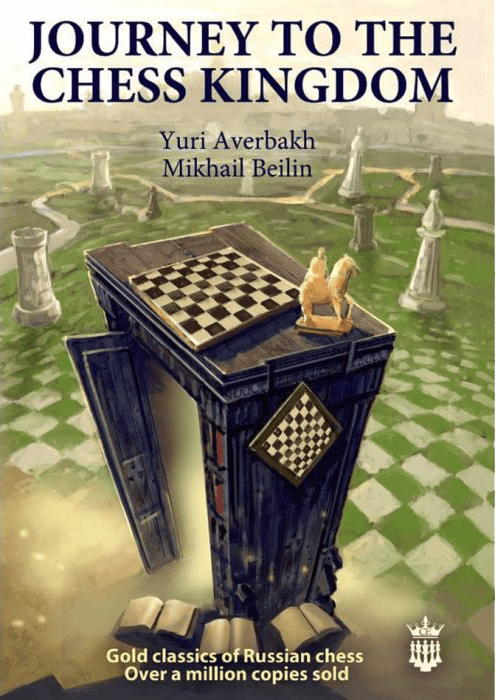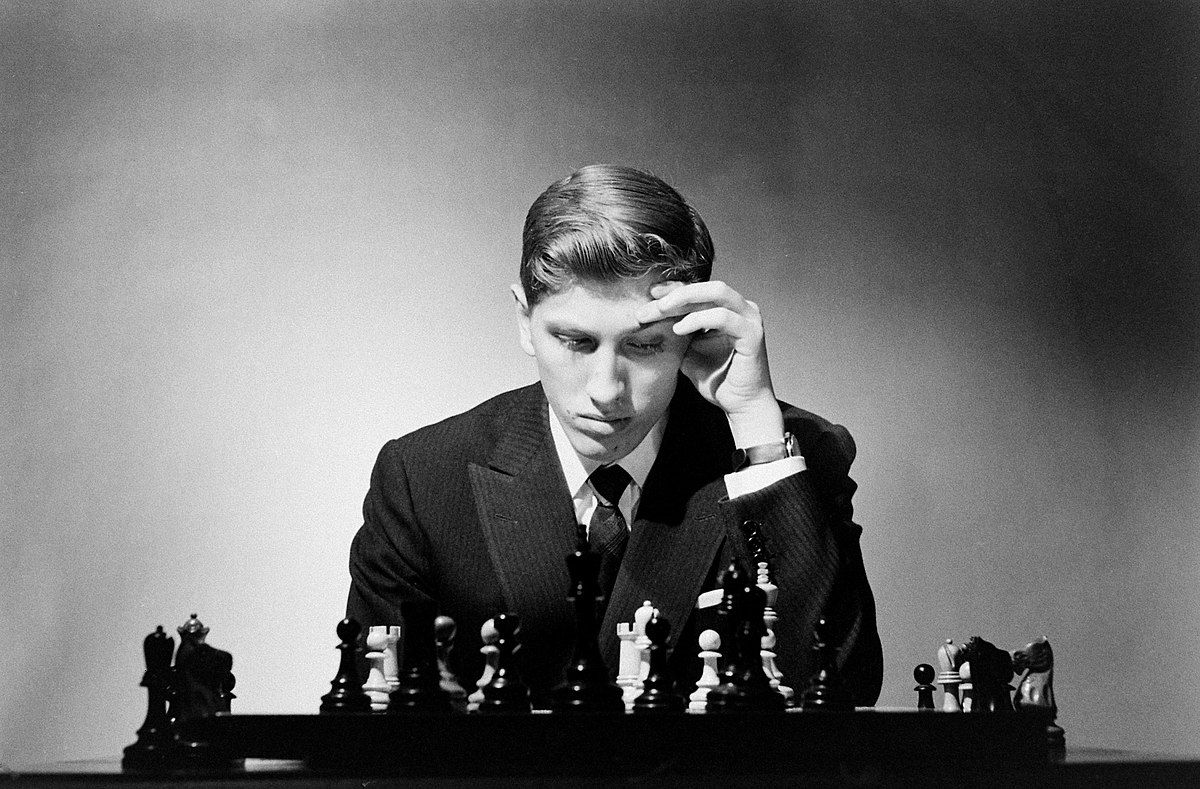
Bobby Fischer Teaches Chess
You have to admit, my dear readers, that the title of this article probably made you think that I was going to talk about GM Bobby Fischer's famous book for beginners. And you would be wrong! While this book is decent, with all due respect, there are much better books for people starting in chess.
My personal favorite there would be Journey To The Chess Kingdom written by GM Yuri Averbakh and master Mikhail Beilin. Of course, I am very biased here, since it was a favorite book of my childhood, but as far as I know, all the top players of my generation (GMs Boris Gelfand, Vasyl Ivanchuk, Alexander Khalifman, etc), really enjoyed this book.

Let's return to Fischer. If you really want to learn chess from the legendary world champion, there is no better way to do it than by studying his other book My 60 Memorable Games.
In an article I wrote two years ago, I already explained the best way to learn from great players using GM Anatoly Karpov's book My Best Games as an example. I strongly recommend at least skimming through this article before you proceed any further to get a general idea of what you should do.
The only thing I would change in that old article is the statement "unlike the price of the above-mentioned bitcoin, your rating will never drop to zero." As it turned out, a better example would have been another member of the cryptocurrency's family called Luna which saw its total value drop from around $40 billion to essentially zero in a span of just four days last week. But let's return to Fischer's book.
The game #51 vs. GM Vasily Smyslov might look like one of the most boring games in the book. Indeed, the opponents went into an endgame right from the opening, then after long maneuvering, Smyslov's position suddenly became hopeless. No king hunt, sacrifices, or other fireworks that attract most club players. But if you study the game deeply, assisted by Fischer's insightful annotations, it is going to be the best possible lesson on positional chess!

While these days top players spend most of the time in front of their computers, you can bet that they have learned Fischer's lessons. A very recent game played last week in the Superbet Chess Classic is an excellent example. So, here is a day at Fischer's Chess Academy, where the professor (Bobby Fischer) gives a lecture and the student (GM Wesley So) passes the exam.
Wesley So's grade for this test: A.
Here is a test for you, my dear readers. What would you do in the following position?
Smyslov had a couple more opportunities to play this move, which would free his game, but failed to do it.
Wesley So's grade for this test: A+.
As you can see, So correctly played the b5-b4 move, which as we already know is highly desirable for Black. As the result, he got the initiative and his rook entered White's second rank. Compare it to the position from Fischer's game if Black had played Fischer's recommendation 19...b4 and sacrificed a pawn.
It is strange that So didn't even try to play for a win when it didn't involve any real risk. I guess he was satisfied that he defended his position much better than Smyslov.
Wesley So's grade for this test: A-.
Every single one of Fischer's moves in this game coupled with his annotation is the ultimate lesson in positional chess. For example, can you guess what Fischer played in the following position?
"So, what's so special about this simple move?" many inexperienced players would ask. Well, moves like this are the foundation of positional chess. You restrict your opponent's pieces' mobility until they become completely passive. Then, all your opponent can do is sit and wait for the unavoidable defeat, just like it happened in Fischer's game. By the way, So could play a very similar move in his game:
I hope you learned a lot from this Fischer masterpiece. But the main lesson of this game is not even a set of particular moves. Next time you see a positional game with no attacks and sacrifices do not dismiss it as being "boring." Think about it: how could a brilliant positional player such as Smyslov lose a game with no blunders, no combinations, and no direct attacks? There is probably some secret that you want to figure out.
Trust me, whenever you learn any "secret" like this, it will make you a better chess player!



